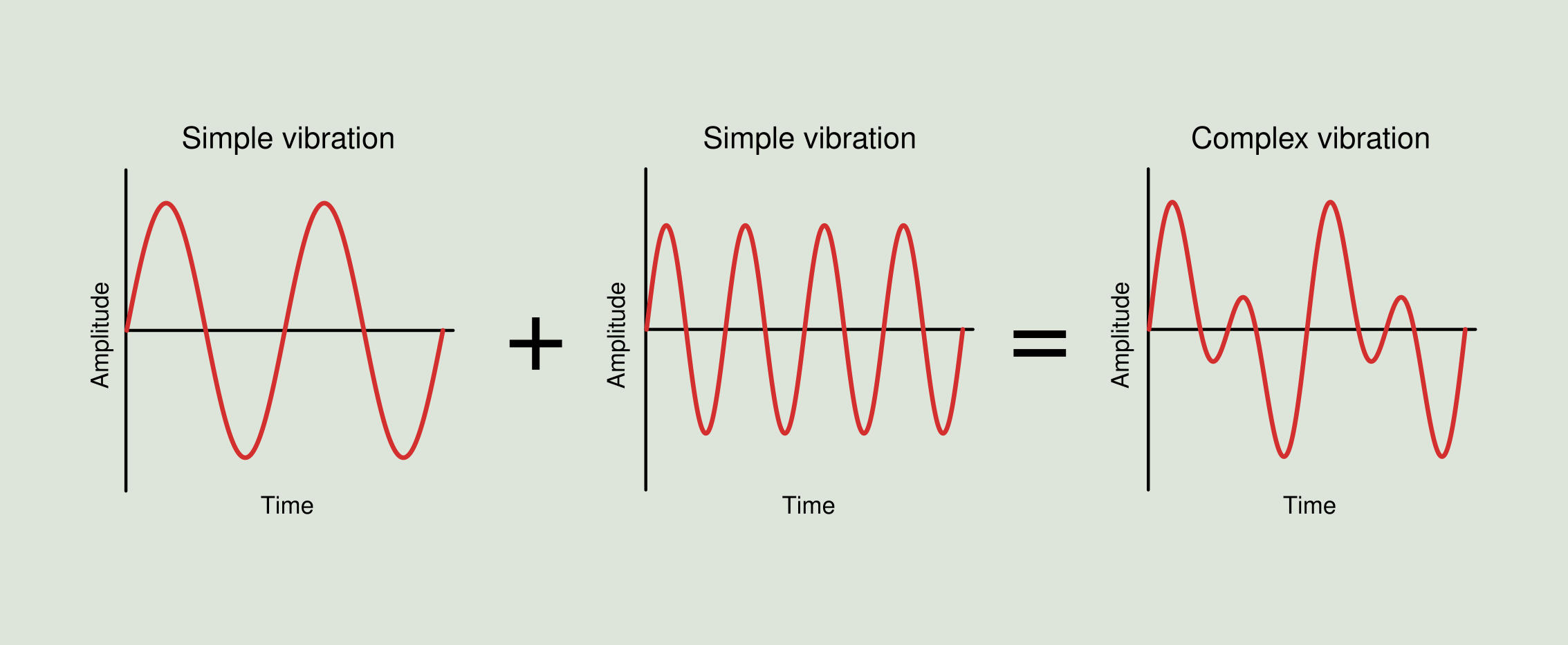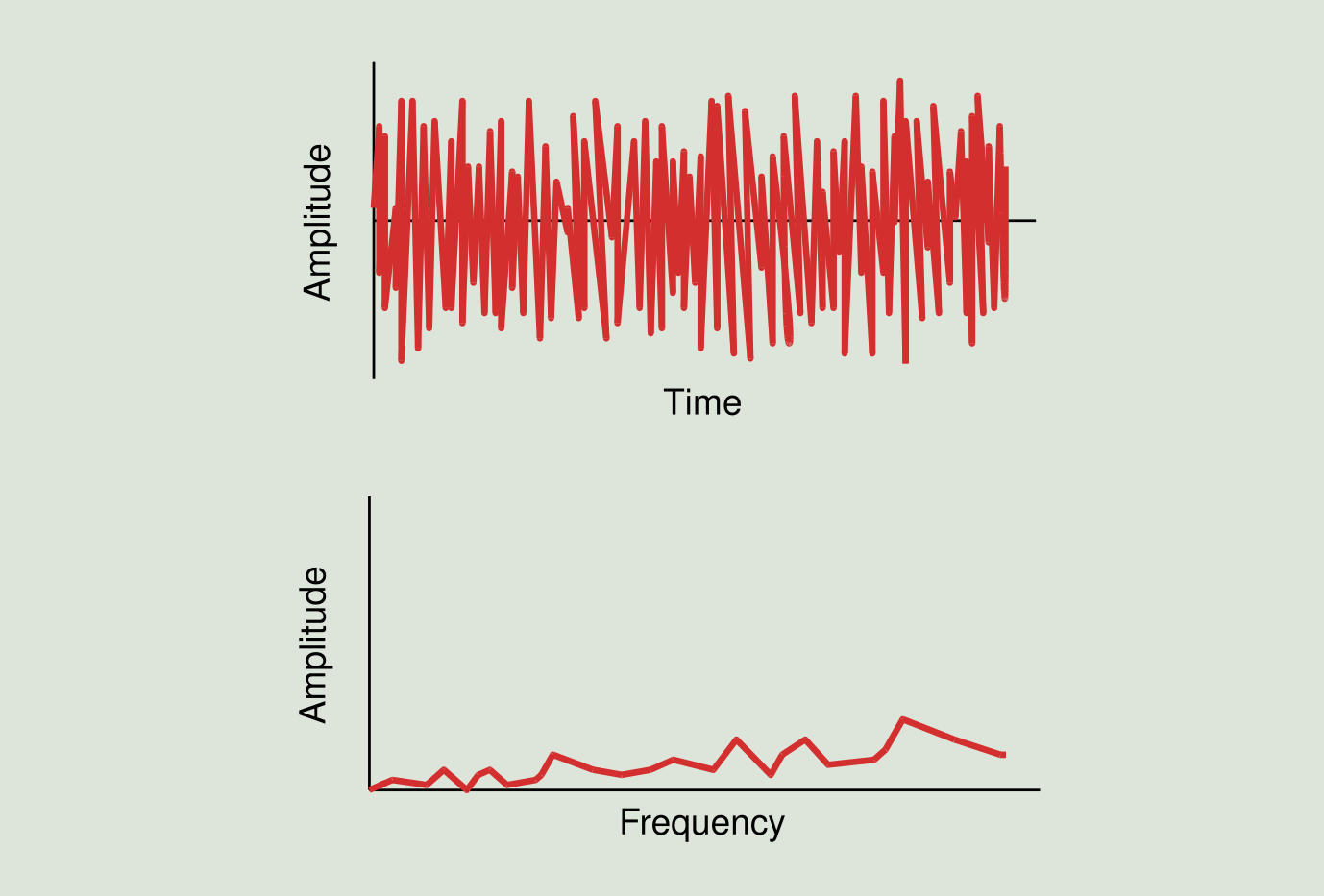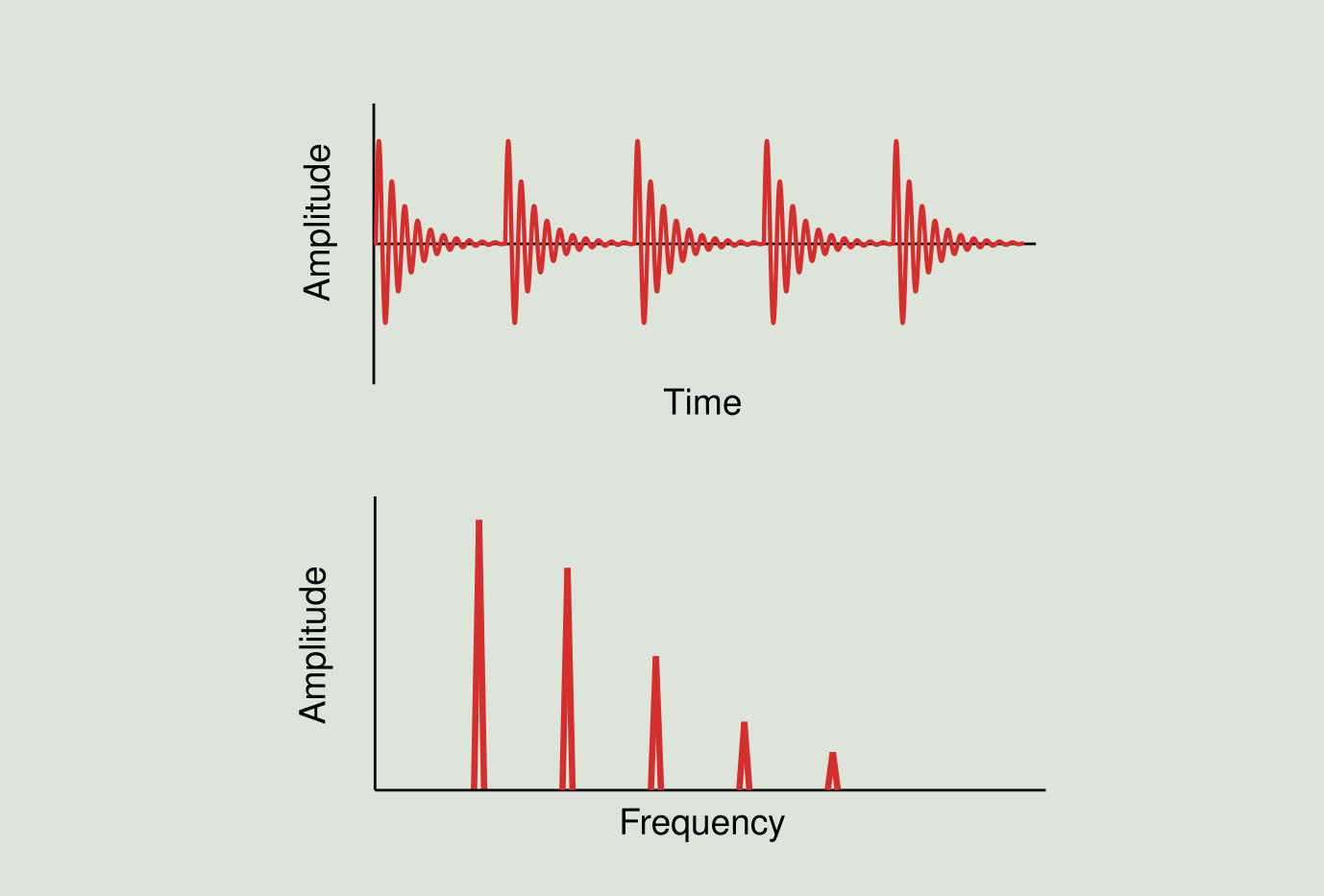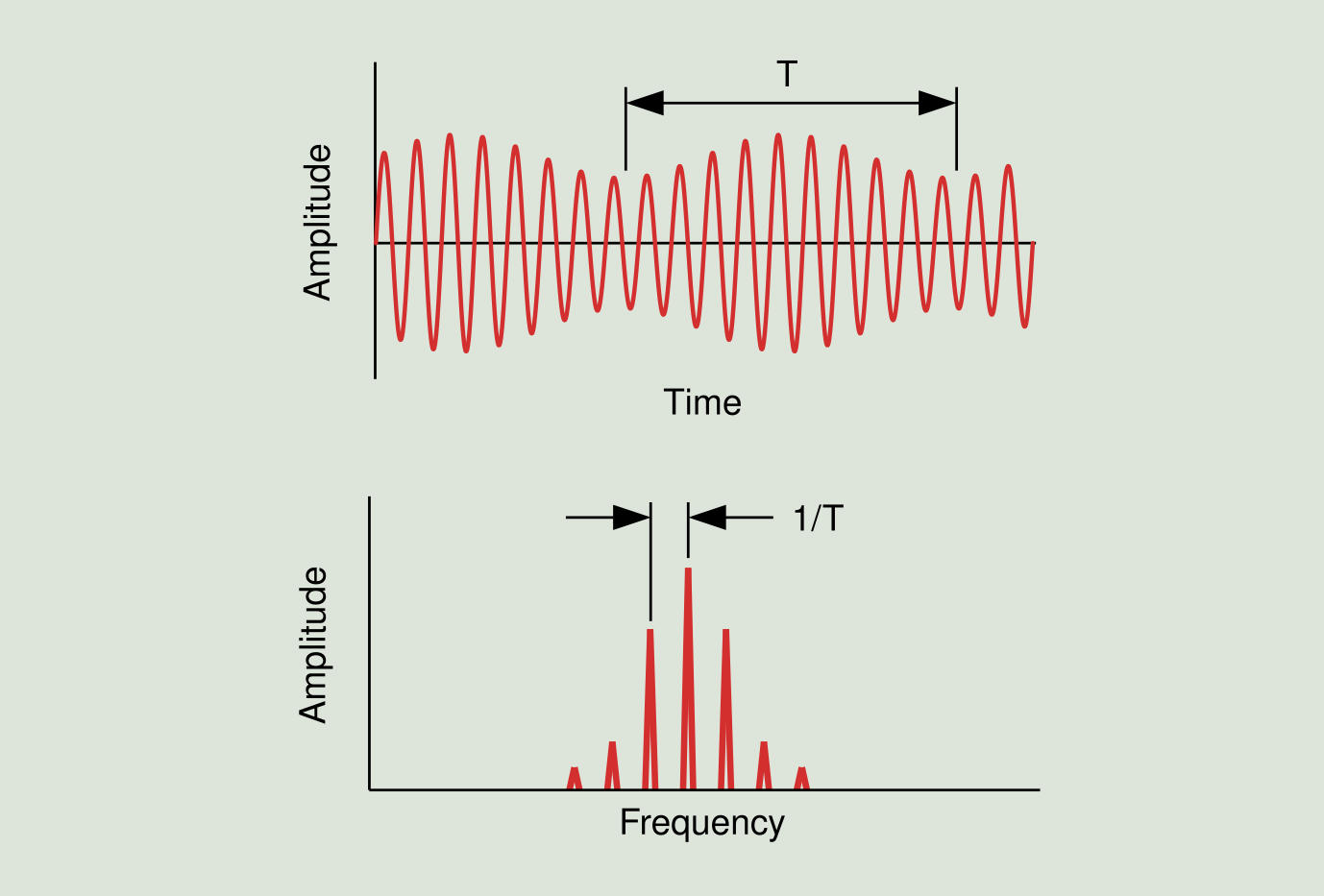Complex vibration
A complex vibration is the sum of several simple vibrations. The vibration of a machine is a complex vibration composed of a series of simple vibrations associated with its moving internal components. With this in mind, it is clear that, in general, the vibration waveform of a machine is not a sinusoidal signal, on the contrary, can become very complex.
As shown in Figure 2.5, two vibration signals with different frequencies can be added forming a complex vibration. Even in cases as simple as this, it is not easy to obtain the frequencies and amplitudes of the two components from the resulting waveform. The vast majority of vibration signals are much more complex than this and can be extremely difficult to interpret.

The most common situation in rotating machinery is that it is not easy to obtain information regarding the internal operation of the machine through the waveform, although in certain cases the analysis of the waveform can be very useful, as it is described later.
Other types of vibration
In addition to simple vibration, there are also other types of vibration such as random vibration, intermittent impacts and modulation.
Random vibration does not meet special patterns that are constantly repeated or it is too difficult to detect where a cycle begins and where it ends. These vibrations are generally associated with turbulence in blowers and pumps, lubrication problems and metal-to-metal contact in rolling elements or cavitation in pumps (see Figure 2.6). These types of patterns are usually best interpreted in the spectrum than in the waveform.

Intermittent beats are associated with continuous beats that create a repetitive signal. These are most commonly found in gears, rolling element bearings, in the pass of impeller or fan blades, etc. This type of signal tends to die due to the damping of the medium. This phenomenon is clearly shown in Figure 2.7.

Amplitude modulation (AM) is the amplitude variation of a signal, due to the influence of another signal, generally, of lower frequency. The frequency being modulated is called the carrier frequency. In the spectrum shown in Figure 2.8, the most important component is the carrier, and the other components, which look like if they were harmonics, are called sidebands. These sidebands are located symmetrically on each side of the carrier, and their distance is equal to the modulating frequency.

Amplitude modulation occurs in machine vibration spectra, especially in gearboxes, where the gear frequency is modulated by the RPM of the pinion or the crown as you can see below.
